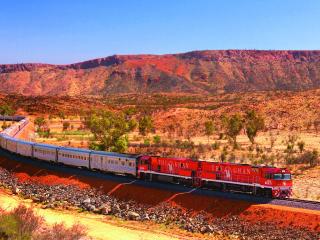Trains History
Woven into the very fabric of our modern lives, it’s extraordinary to think of a time where trains existed only as a tool of industrial transport. Key to the acceleration of the Industrial Revolution, trains transformed global society as they contributed to the growth of cities and remote towns, expanded job opportunities and unlocked the potential for global and domestic travel.
Suddenly boarders were crossed with great efficiency, goods were traded across vast distances and the world truly seemed to open its doors for global communication, travel and economics. A far cry from the intricate railway networks and transports speeds that we enjoy today, its important to look back at the history of trains to learn from our journey and appreciate the distance modern society has travelled.

Australia's First Trains
Australia’s first steam railway was built in 1954, transporting passengers between Melbourne and Port Melbourne. Rapidly networks sprang up, connecting colonies across the country and by the time we reached Federation 47 years later, more than 20,000km of railway tracks linked the vast land. It wasn’t until World War II that significant attention was again paid to the national network, bringing a consistent system in to the new age of Australia and effectively connecting the country’s major cities.

Famous Train Stations
Australia’s first steam railway was built in 1954, transporting passengers between Melbourne and Port Melbourne. Rapidly networks sprang up, connecting colonies across the country and by the time we reached Federation 47 years later, more than 20,000km of railway tracks linked the vast land. It wasn’t until World War II that significant attention was again paid to the national network, bringing a consistent system in to the new age of Australia and effectively connecting the country’s major cities.

History of the Ghan
Australia’s first steam railway was built in 1954, transporting passengers between Melbourne and Port Melbourne. Rapidly networks sprang up, connecting colonies across the country and by the time we reached Federation 47 years later, more than 20,000km of railway tracks linked the vast land. It wasn’t until World War II that significant attention was again paid to the national network, bringing a consistent system in to the new age of Australia and effectively connecting the country’s major cities.
